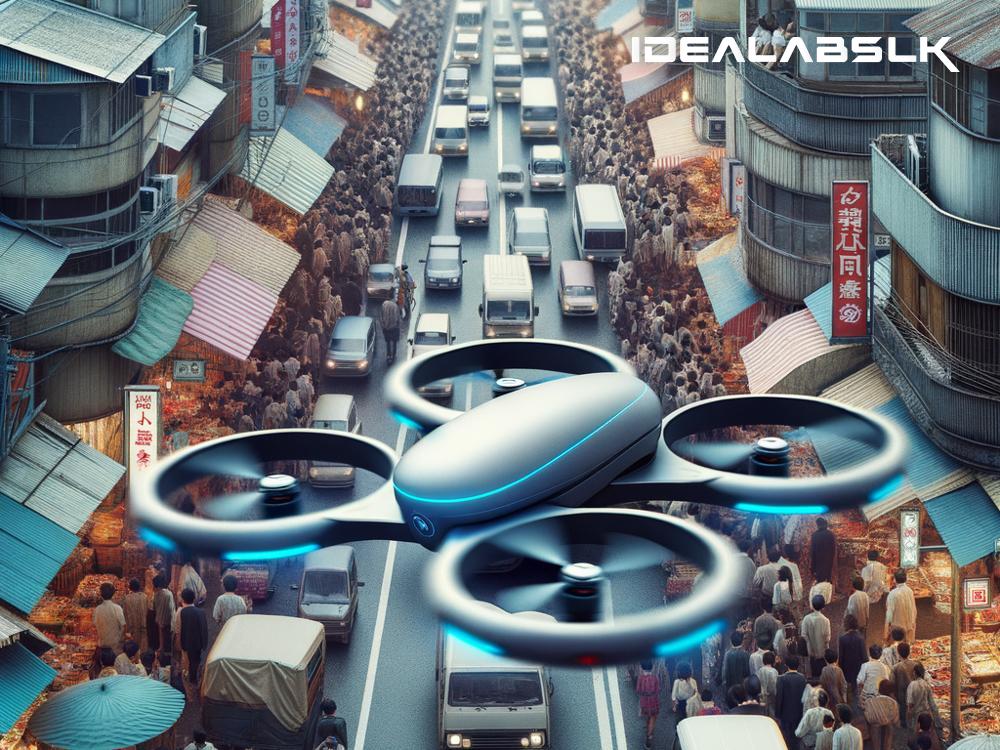How AI Is Revolutionizing the Way Compact Drones Navigate
The realm of compact drones is undergoing a significant transformation, thanks to the infusion of Artificial Intelligence (AI). Gone are the days when drones relied solely on preset routes and direct human control for navigation. Today, AI is at the forefront, pushing the boundaries of what these flying machines can achieve, especially in navigating complex environments autonomously. Let’s delve into how AI is enhancing the navigation capabilities of autonomous compact drones, making them smarter, safer, and more efficient.
Understanding AI in Drones
At its core, AI involves machines mimicking human intelligence, learning from experiences, adapting to new inputs, and performing human-like tasks. In drones, AI plays a pivotal role in processing vast amounts of data from their surroundings, learning from it, and making split-second decisions, all without human intervention.
Smarter Flight Paths
One of the most significant advantages of integrating AI into compact drones is the ability to generate smarter flight paths. Using AI algorithms, drones can now analyze their environment in real-time, identify obstacles, and dynamically adjust their routes. This is not just about avoiding a tree or a building; it’s about understanding the environment in 3D and making decisions that ensure the safest and most efficient path. This capability is crucial, especially in urban areas or complex terrains, where static navigation maps are often insufficient.
Autonomous Decision-Making
AI empowers drones with autonomous decision-making capabilities. With traditional drones, a pilot would need to continuously monitor and adjust the drone's path, but AI-driven drones can make these decisions independently. This includes real-time adjustments for weather changes, avoiding moving obstacles like birds or other drones, and even making landing decisions in emergencies. This level of autonomy ensures that drones can operate safely, even in densely populated or unpredictable environments.
Learning and Adapting
Perhaps one of the most exciting aspects of AI in drone navigation is the ability to learn and adapt. Through machine learning algorithms, drones can analyze past flights, understand what worked well and what didn’t, and improve their future flight paths. This means that every flight not only serves its immediate purpose but also contributes to the drone's 'experience', enhancing its performance over time. This self-improving system represents a significant leap forward in making drones more reliable and efficient navigators.
Enhanced Visual Perception
AI enhances a drone's visual perception through sophisticated image recognition and processing techniques. Compact drones equipped with cameras and AI can interpret visual data in real-time, distinguishing between different objects, understanding terrain types, and even recognizing signs or symbols. This capability is invaluable for tasks such as precision agriculture, where drones can identify crop health, or in search and rescue operations, where identifying individuals or landmarks is crucial.
Energy Efficiency and Sustainability
Navigation efficiency directly impacts a drone’s energy consumption. AI-optimized flight paths reduce unnecessary maneuvering and ensure the most direct and safe routes, thereby maximizing battery life. This is particularly important for compact drones, which have limited energy resources. Moreover, by enhancing the precision in applications like precision agriculture or infrastructure inspection, drones can reduce their environmental footprint, contributing to sustainable operations.
Future Possibilities
The integration of AI in compact drone navigation is still in its nascent stages, with vast potential for growth. Future developments might include more sophisticated swarm intelligence, where multiple drones can communicate and collaborate autonomously, performing complex tasks more efficiently than a single drone could. Similarly, advances in AI could lead to drones capable of more nuanced interactions with their environment, such as avoiding areas with high carbon footprint or even interacting with other electronic devices autonomously.
Conclusion
The fusion of AI and compact drones represents a significant stride forward in technology, whose implications stretch far beyond mere novelty. From improving safety and efficiency in drone navigation to enabling entirely new applications in various sectors, AI is truly changing the game. As technology continues to evolve, we can expect drones to become even more autonomous, intelligent, and integral to our everyday lives. The sky's no longer the limit — it's just the beginning.

